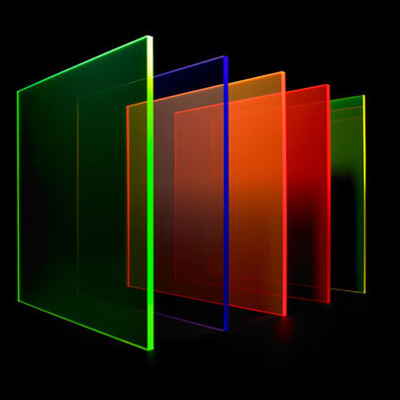Plexiglas (plexiglas/PMMA/polycarbonate/acrylic glass) is a material that is constantly evolving and offers numerous potential in its application, not just by itself but also combined with other materials, like metal and wood. Its resistance in time and use is among the basic advantages. Plexiglas can be cut in any desirable shape, limiting the application only to your imagination! For the process of the material there are various plexiglas ply in various sizes.
The most classical form of plexiglas is the transparent one, that is clearer than a usual glass, it has great resistance over excessive use and low weight, in contrary to real glass. It is available in transparent form and in different colours, square and round bars, tubes and mirrors.
The word “Plexiglas” is used for describing the transparent thermoplastic. It has many uses like replacing glass in home appliances and aquariums . Also, plexiglas is used in sport events such us creating protective shields for the spectators.
In the motorcar and transportation industry, plexiglas is used for the improvement of the window design of aircraft, allowing embossing. In various police vehicles all over the world, plexiglas technology is used to replace simple glass in order to be protected from objects thrown at them.
Diffusion of Light
Plexiglas can also be used to redirect day light through a tube and into a room. A panel is used as a shelf with reflective and refractive properties and when it is located at the right angle it can evenly spread its rays towards a particular area. This can also be used as a window and a cover so that a room can be illuminated. The same strategy can be used with greenhouses so plants can absorb the amount of light they need.
Art
Plexiglas/PMMA is used in the artistic world in modern furniture and decorations. It can also be used in objects like guitars, pianos and office chairs in order to make them opaque objects with reflection. Diasec is a procedure that uses acrylic acid as a substitute of glass in picture framing. Plexiglas uses that method because of its low cost, it is difficult to break, it is more aesthetic to the human eye, and it can easily be done in larger sizes than the regular framing method. Plexiglas uses the PMMA technology for the creation of neon signs, and letter cutting for the name and logo of companies.
The chemical composition of plexiglas
Plexiglas (PMMA-Polymethyl methacrylate) is a transparent stiff insulated glass; a synthetic resin made of the polymerization of methyl methacrylate. Is an ester found mainly out of propylene.
Basic characteristics of plexiglas
1. it is insulated
2. High Temperature Tolerance
3. Tolerant in bad weather conditions
4. More transparent than glass
5. Great resistance in excessive use
6. Shatter Resistance
7. Infusion of light




